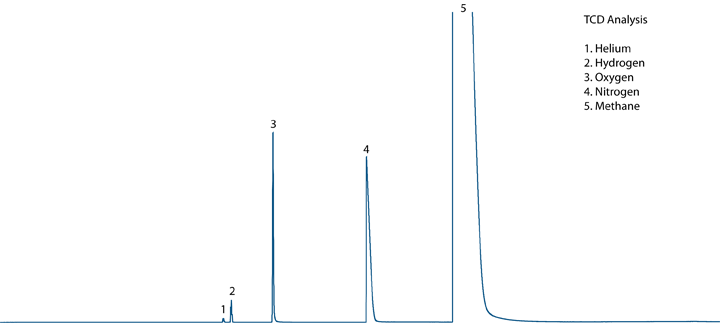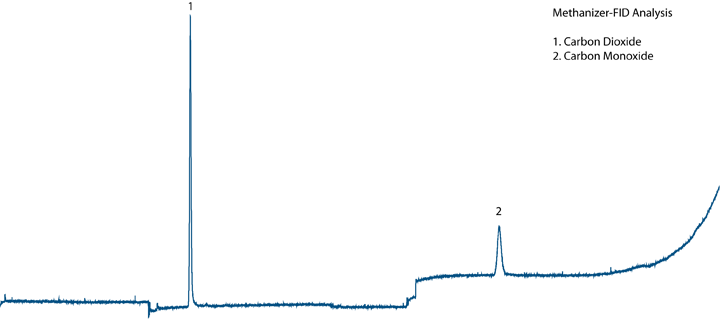Applications
ISO 6974-6:2002 – Determination of Natural Gas Composition with Defined Uncertainty
Analyzer Description
- Configuration:
- 4-valves, 5-capillary columns, methanizer, TCD, FID, FID, LTM Series II
- Sample type:
- Natural gas
- Compounds Separated:
- Methane, ethylene, ethane/acetylene composite, propylene, propane, isobutane, n-butane, neopentane, isopentane, n-pentane, 2,2-dimethylbutane, 2-methylpentane/2,3-dimethylbutane/cyclopentane composite, 3-methylpentane, n-hexane, benzene, cyclohexane, n-heptane, toluene, n-octane, ethylbenzene, m-xylene/p-xylene composite, n-nonane, o-xylene
- Hydrogen, helium, oxygen, nitrogen, carbon dioxide, carbon monoxide
- Concentration Range:
- 20 ppm to 5,000 ppm for helium
- 20 ppm to 5,000 ppm for hydrogen
- 70 ppm to 50,000 ppm for oxygen
- 70 ppm to 400,000 ppm for nitrogen
- 40 mol% to 100 mol% for methane
- 10 ppm to 10,000 ppm for carbon monoxide
- 10 ppm to 100,000 ppm for carbon dioxide
- 10 ppm to 5,000 ppm for acetylene, ethylene, propylene
- 20 ppm to 150,000 ppm for ethane
- 10 ppm to 50,000 ppm for propane
- 1 ppm to 10,000 ppm for n-butane, isobutane
- 1 ppm to 5,000 ppm for all remaining components
- Methods met:
- ISO 6974-6, Wasson-ECE W4151
Typical Chromatogram




Key Features and Benefits
- ISO 6974-6:2002 recommends using two separate gas chromatographs in series, Wasson-ECE Instrumentation performs the analysis on a single gas chromatograph using three unique thermal zones.
- On-board regulators ensure that flow is consistent.
- Argon and nitrogen carrier gases are used.




